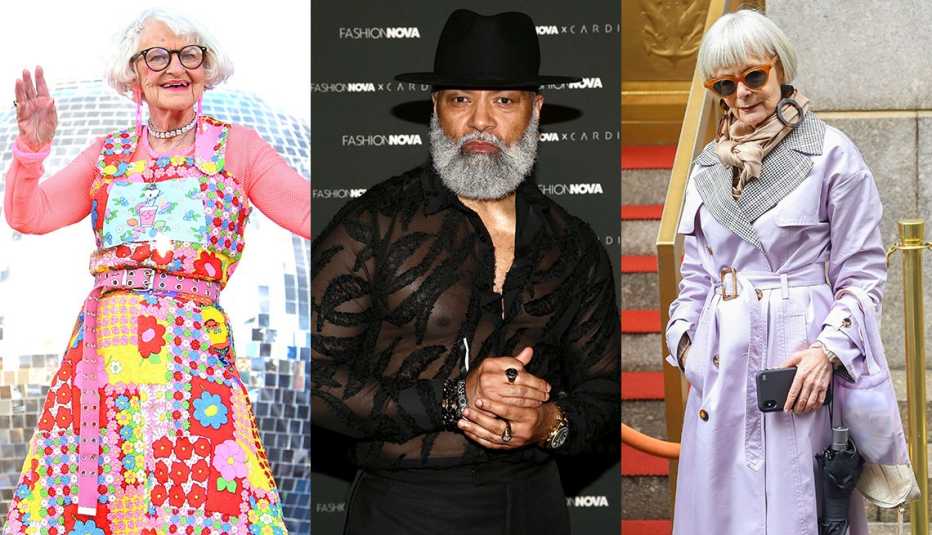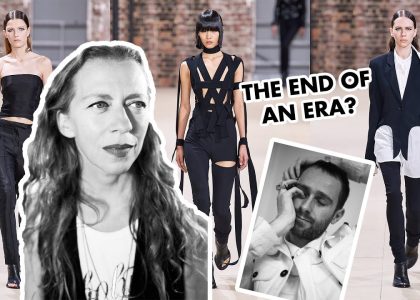In the ever-evolving landscape of the fashion industry, one of the most profound shifts in recent years has been the increasing recognition and importance of the aging consumer demographic. Once overlooked or marginalized, older consumers are now commanding attention from fashion brands and designers, challenging traditional notions of beauty, style, and market dynamics. This transformation is not merely a demographic trend but a seismic shift in the very fabric of the fashion business.
The Evolution of Generational Influence
The dawn of the new millennium heralded the rise of the millennial generation, poised to inherit the mantle of fashion influence from their predecessors. However, as the oldest millennials surpass 40 years of age, they find themselves eclipsed by younger generations, notably Generation Z. These shifting demographics have not only reshaped consumer preferences but also disrupted established trends in fashion and attire.
As millennials age into their forties, they face the harsh reality of waning influence, supplanted by the ascendant Generation Z, whose preferences and aspirations diverge markedly from their predecessors. This generational transition underscores the fluidity of fashion trends and the imperative for brands to adapt to evolving consumer dynamics.
The Economic Imperative: Embracing Aging Consumers
Amidst these demographic shifts lies a compelling economic imperative: the burgeoning purchasing power of older consumers. Projections indicate that over the next two decades, consumers aged 50 and above will wield significant spending power, estimated at a staggering €15 billion. This demographic segment, comprising between 45% and 50% of the market, represents a formidable economic force that fashion brands can ill afford to overlook.
Despite the undeniable economic clout of older consumers, the fashion industry has historically marginalized this demographic, perpetuating ageist stereotypes and exclusionary practices. However, a growing awareness of the purchasing potential of older consumers has prompted a reassessment of marketing strategies and brand messaging.
The Paradigm of Representation: Addressing Ageism in Fashion
Central to the fashion industry’s evolving landscape is the imperative to confront ageism and challenge prevailing stereotypes regarding beauty and aging. Older consumers, long ignored by mainstream fashion narratives, are demanding greater visibility and representation in advertising, branding, and product offerings.
A pivotal moment in challenging ageism occurred with the iconic portrayal of octogenarian Joan Didion in a campaign for Céline by Phoebe Philo in 2015. This watershed moment signaled a departure from traditional notions of youth-centric marketing, signaling a broader shift towards inclusivity and diversity in fashion.
The Commercial Imperative: Adapting to Changing Demographics
In response to changing demographics and consumer preferences, fashion brands are recalibrating their marketing strategies and product offerings to appeal to older consumers. This paradigm shift encompasses diverse elements, including design aesthetics, messaging, and brand positioning.
An illustrative example of this strategic realignment is the recent appointment of Walter Chiapponi, a seasoned industry veteran, as creative director of Blumarine. Chiapponi’s tenure signifies a departure from youth-centric designs towards a more inclusive and timeless aesthetic, reflective of the brand’s heritage and values.
Navigating the Ageism Dilemma: Insights from Industry Leaders
Amidst the seismic shifts in consumer demographics and market dynamics, industry leaders offer invaluable insights into navigating the ageism dilemma and embracing older consumers. From innovative marketing campaigns to inclusive design practices, fashion brands are exploring multifaceted strategies to engage with older demographics.
Charlotte Rampling, the face of Massimo Dutti at 77 years old, embodies the intergenerational appeal of fashion, challenging conventional notions of age and beauty. Similarly, Maggie Smith’s collaboration with Loewe and Maye Musk’s influence in the cosmetics industry underscore the transformative potential of inclusive marketing and design.
Charting the Future: Embracing Diversity and Inclusivity
As the fashion industry grapples with the imperative of inclusivity and diversity, addressing ageism emerges as a pivotal frontier in redefining conventional paradigms. From runway shows to advertising campaigns, fashion brands are embracing diverse representations of beauty and age, challenging entrenched stereotypes and fostering a more inclusive ethos.
Phoebe Philo’s eponymous label exemplifies this commitment to inclusivity, with a branding strategy tailored to women aged 40 and above. By prioritizing older consumers in both design and marketing, Philo’s brand embodies a progressive vision of fashion that transcends age barriers and celebrates individuality.
Conclusion: The Age of Inclusivity in Fashion
In conclusion, the fashion industry stands at a crossroads, poised to embrace a new era of inclusivity and diversity. As older consumers assert their influence and demand greater representation, fashion brands must adapt to evolving market dynamics and challenge ageist conventions.
By prioritizing inclusivity in design, marketing, and branding, fashion brands can forge deeper connections with consumers of all ages, fostering a more inclusive and vibrant industry landscape. In the age of inclusivity, diversity emerges as a source of strength and innovation, propelling the fashion industry towards a more equitable and dynamic future.


